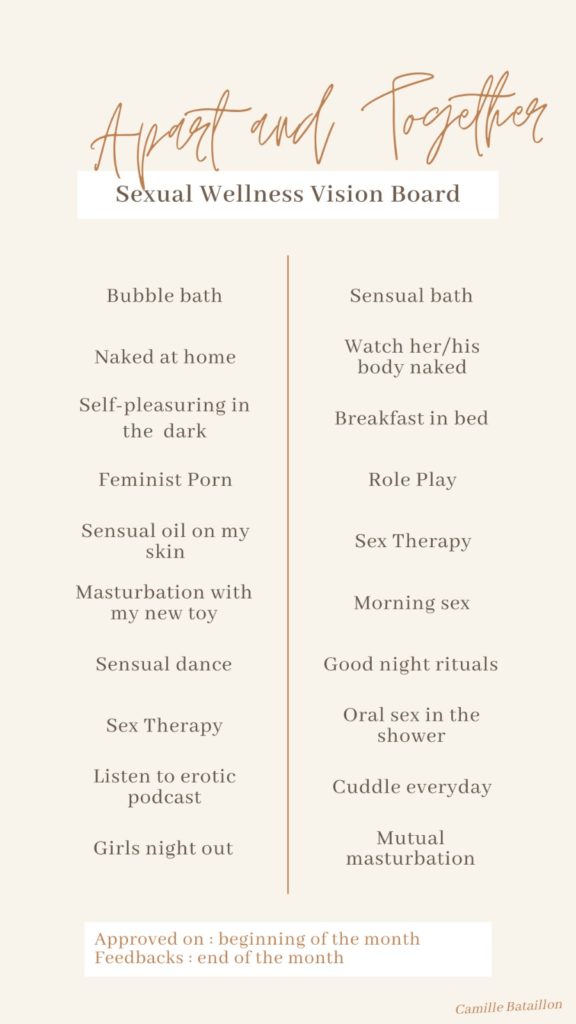The Sexual Wellness Vision Board is a tool to keep on track your intimate life with yourself and with your partner.
In consultation, I often find that couples complain of a lack of spontaneity in the sexual impulse. I then ask them what they put in place to take care of their intimate and relational life? Silence
The number one mistake is to think that desire, connection, sexual attraction must always be spontaneous. It can work very well in the beginning and in the long run it’s more complicated. However, what always works it is by putting erotic elements into play every day that nourish your sexual well-being
I realized this vision board so that the couples set up each month erotic elements which will come to take care of their complicity and sexual wellness.

How it works
- Download the template
- At the beginning of the month or at a ritual date of the month, Install the two of you to fill in the right part together. Write down the erotic things you both decide to set up for the next month.
- Then together or separately, fill in the left column on the things that you will put in place to take care of you, your self-pleasure. Your solo time is extremely important and will fill your erotic life together. The best is to be able to spend quality time with the other when you feel full and nourished.
- At the end of the month or a month after the approval of the vision board, Sit down together to debrief the things you liked, the hightlights of the good times. And give adjustments on things to improve for the next few times.
- Repeat this process every month of your relationship. And have fun !
PS : For couples undergoing sex therapy, the feedbacks from this vision board can be interesting to work on during a session.
This section of tips had been co-written with my colleague Camille Nerac. You can also find their illustrations on my Instagram page “camilleparlesexe“

